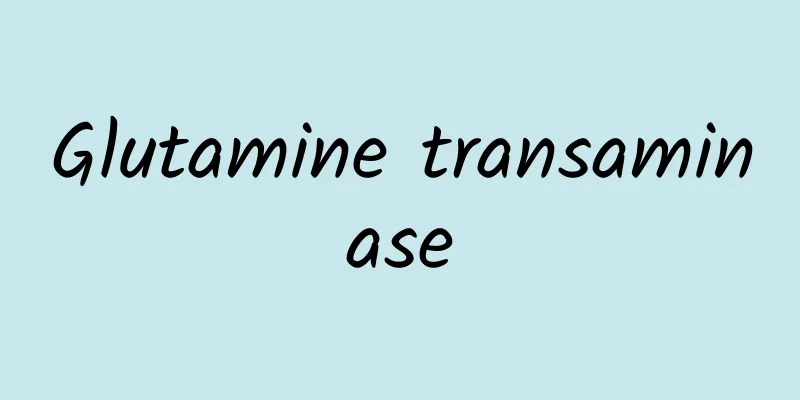Glutamine transaminase

|
Many people may be confused when seeing this name. Although the name of this enzyme is relatively long, glutamine transaminase is often used in our lives. Glutamine transaminase exists in humans and some higher animals. This enzyme is very helpful to the human body. It can help the body digest protein and dissolve protein, so that the protein can be better absorbed. We often use this enzyme in our daily life. Glutamine transaminase is also present in some of the foods we eat. This enzyme can help food improve the elasticity of its meat and retain its proper moisture. Glutamine aminotransferase, also known as transglutaminase (TG enzyme), is a monomeric protein with an active center and a molecular weight of about 38,000, which is composed of 331 amino groups. It can catalyze the intramolecular and intermolecular covalent cross-linking of protein polypeptides, thereby improving the structure and function of the protein, and has a significant effect on the properties of the protein such as foaming, emulsification, emulsion stability, thermal stability, water retention and gelling ability, thereby improving the flavor, taste, texture and appearance of food. Conventional meat processing often adds large amounts of salt and phosphoric acid to improve its water holding capacity, consistency and texture. Recently, foods with less salt and phosphate have been widely promoted, but their texture and physical properties are not satisfactory. TG enzyme can replace part of the quality improver phosphate added in meat processing to produce low-salt meat products. It can be applied to processed aquatic products, ham, sausage, noodles, tofu, etc. Under the conditions of 40-45℃ and pH 6-7, only 0.1-0.3% of TG enzyme needs to be added to achieve obvious effects. Glutamine transaminase English name: Glutamine transaminase Other name: transglutaminase Product Description: Microbial transglutaminase is an enzyme that catalyzes inter-protein (or intra-protein) acyl transfer reactions, resulting in covalent cross-linking between proteins (or polypeptides). 1. What is TG? TG is a type of food additive developed using modern bioengineering technology and used to produce new protein foods. The main functional factor of TG is transglutaminase (EC 2.3.2.13, TG for short). The main difference between different series of products lies in the different types and quantities of proteins used as auxiliary materials. The main ingredients of TG products: Main ingredient TG TG 0.5% 1% Protein 99.5% 99% 2. What functions does TG have? The main functional factor of TG is transglutaminase. This enzyme is widely present in the human body, higher animals, plants and microorganisms, and can catalyze cross-linking between or within protein molecules, the connection between proteins and amino acids, and the hydrolysis of glutamine residues within protein molecules. Through these reactions, the functional properties of various proteins can be improved, such as nutritional value, texture structure, taste and storage life. 3. What are the uses of TG in food processing? Improve food texture. It can improve many important properties of proteins by catalyzing cross-linking between protein molecules. For example, when this enzyme is used to produce reconstituted meat, it can not only bind minced meat together, but also cross-link various non-meat proteins to meat proteins, significantly improving the taste, flavor, organizational structure and nutrition of meat products. Improve the nutritional value of protein. It can covalently cross-link certain essential amino acids (such as lysine) to proteins to prevent the destruction of amino acids by the Maillard reaction, thereby improving the nutritional value of protein. Transglutaminase can also introduce missing amino acids into proteins with suboptimal amino acid composition, which is of particular interest to people in developing countries. Forms a heat-resistant and water-resistant film. After dehydration of casein cross-linked by this enzyme, a water-insoluble film can be obtained. This film can be decomposed by chymosin, so it is an edible film that can be used as a food packaging material. Used to embed lipids or fat-soluble substances. Improve the elasticity and water holding capacity of food. The above is the information about glutamine transaminase. I believe that after reading it, you will have a better understanding of this enzyme. There are many kinds of enzymes in the human body, each of which has its own unique function, and glutamine transaminase is no exception. Learn more about the materials you come into contact with in your daily life so that you can make better use of them. |
<<: Soreness and weakness in limbs
Recommend
What to do if your baby's temperature is 39 degrees
Since the baby's immune system is in a state ...
How many days after menopause can I do B-ultrasound
Married women should prepare for pregnancy before...
What to do if the nerve root of lumbar disc herniation is adherent
If lumbar disc herniation causes nerve root adhes...
The difference between color blindness and color weakness
Color blindness and color weakness are relatively...
Emergency treatment and four stages of recovery for ankle sprains
Life lies in exercise. Many people like to exerci...
What foods should you avoid if you are allergic? You must stay away from these
The change of seasons is the peak period for skin...
What does mental disorder mean?
Mental disorder refers to a disorder in brain act...
What causes unilateral nosebleeds?
Some patients with rhinitis often have nosebleeds...
How long does it take to defecate after drinking the compound polyethylene glycol electrolyte powder?
Compound polyethylene glycol electrolyte powder i...
Can anxiety disorder heal itself?
Anxiety disorder has become a very common disease...
What's going on with the two testicles being one above the other?
Although the testicles are very small organs, thei...
Is tonsillitis easy to treat? Does it still require Chinese medicine?
Tonsillitis is also very common among children. P...
Chinese herbal medicine for dispelling wind and dampness
Rheumatism and rheumatoid diseases trouble many p...
What are the effects of stone frog
The stone frog is relatively large in size compar...
Ginseng and Snow Clam Oral Liquid
There are more and more oral liquids now. There a...









